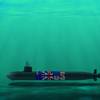Lithuania Inks First Statoil LNG Deal
Lithuania seeks to cut dependence on Russia; Statoil to supply 0.54 bcm of gas per year. This will cover about 20 pct of Lithuania's demand.
Lithuania signed its first liquefied natural gas purchase deal with Norway's Statoil on Thursday, helping the country to reduce its total dependence on Russian supplies.
The Baltic state plans to import 0.54 billion cubic metres (bcm) of gas from Norway from 2015, enough to meet about one-fifth of its total consumption.
The gas will supply a floating LNG terminal, named the "Independence". The total value of the contract is estimated at a little over $1 billion and the LNG price is linked to Britain's National Balancing Point (NBP) gas hub, Lithuanian importer Litgas said.
"For the first time in Lithuania's history we will have an alternative source of natural gas supply," Lithuania's Prime Minister Algirdas Butkevicius told a news conference after the deal was signed.
"It's a big step in boosting Lithuania's energy security and creating a possibility to lower gas prices for consumers," he added, although industry data show that the imported LNG would currently not be cheaper than Russian pipeline gas.
Lithuania will pay 900-1,000 litas ($346-$384) per 1,000 cubic metres for the Norwegian gas based on NBP prices for the last four months, Litgas said, comparable to the oil-indexed price of $359 per 1,000 cubic metres paid for pipeline gas supplied by Russia's Gazprom, data from Lithuania's energy market regulator showed.
While the LNG imports may not be cheaper than current Russian pipeline gas, the alternative supply option did put pressure on Gazprom to offer a lower price.
Lithuania was paying a much higher price for Russian pipeline gas until May, around $465 per 1,000 cubic metres, when Gazprom agreed to cut it facing a threat of international arbitration and the start of LNG imports.
BALTIC LNG DEMAND TO RISE
The amount of natural gas to be imported from Norway translates into 6-7 LNG cargoes, a relatively small deal for the Norwegian energy major, but Statoil said it expected demand from LNG import terminals in the Baltics to rise as Lithuania's is only one of several such projects in the region.
"We think that demand for LNG in smaller quantities will increase in the region and that is the development that we would like to participate in," Statoil's Vice-President Geir Heitmann, told journalists.
Spurred by the Ukraine crisis, Baltic states such as Poland, Lithuania, Estonia and Finland are fast-tracking plans to boost LNG imports, hoping to drastically cut Moscow's grip on the region's supply.
Statoil has also won a deal to send a single LNG tanker that will commission the floating terminal in autumn.
Litgas, a gas trading arm of Lithuania's state-owned energy group Lietuvos Energija, has also signed 12 non-binding Master Sale and Purchase agreements with global LNG suppliers to have an option to buy LNG cargoes on the spot market if needed.
At full capacity, the Lithuania terminal will have the capacity to import up to 2 billion cubic metres (bcm) of gas from 2015, with an option to lift output up to 4 bcm.
The Baltic state consumed less than 3 billion cubic metres of natural gas in 2013.
By Andrius Sytas










